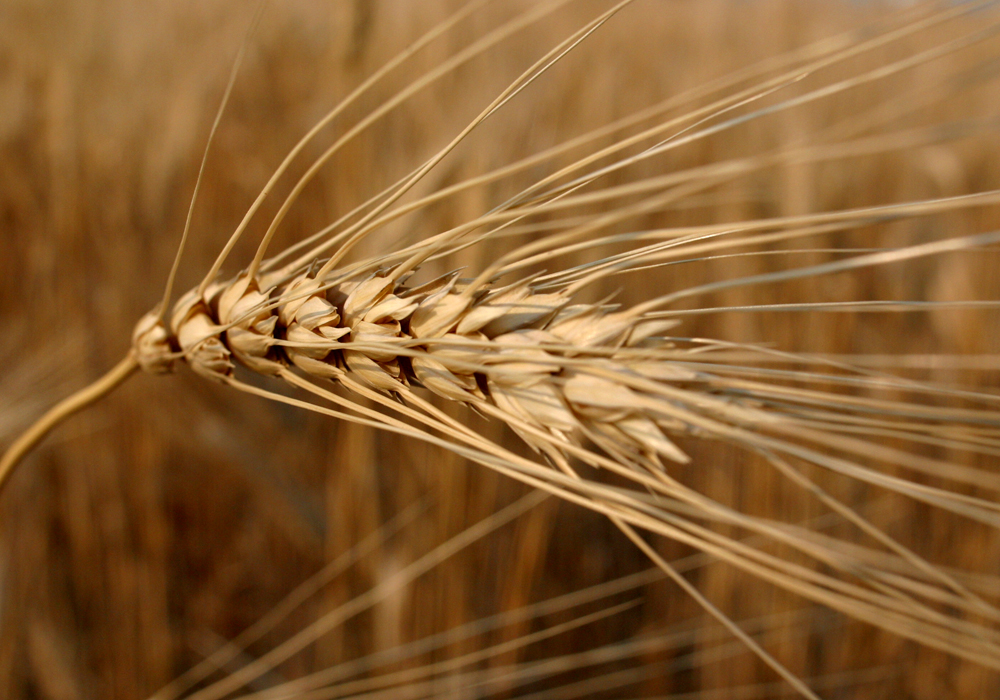A team of international researchers has sequenced the durum genome, an accomplishment that will contribute to the development of new and more productive durum wheat varieties for growers in Canada and around the world.
“It’s a big accomplishment,” said Curtis Pozniak, a University of Saskatchewan durum breeder who played a key role in the project.
“For the first time, we can see all of the genes in their correct order and we can understand a bit more about their expression patterns….”
“But having the sequence on its own is not the magic,” he added.
Read Also

Farming Smarter receives financial boost from Alberta government for potato research
Farming Smarter near Lethbridge got a boost to its research equipment, thanks to the Alberta government’s increase in funding for research associations.
“There’s still quite a bit of work that we need to do to understand what genes are related to the traits that we’re selecting for.”
Pozniak said completion of the sequencing project is an important accomplishment that will support durum research and breeding efforts around the world.
However, it could be years before the impact is felt at the producer level.
Now that the genome map is complete, an important next step is the development of new DNA markers that will assist breeders in selecting the most beneficial parent materials for breeding programs.
Ultimately, the discoveries will lead to the development of new varieties that offer enhanced traits such as higher yield potential, better end-use quality and improved resistance to fusarium headblight (FHB), Pozniak said.
As part of the larger genome mapping project, Pozniak and University of Alberta scientists Gregory Taylor and Neil Harris used Canadian durum varieties to identify the gene linked to the uptake of cadmium, a toxic heavy metal that can accumulate in harvested grain.
That work will allow scientists and breeders in other countries to improve their own breeding materials and reduce cadmium uptake in the varieties they develop and commercialize.
The international research effort involved more than 60 scientists from seven countries and was co-ordinated by Luigi Cattivelli of Italy’s Council for Agricultural Research and Economics (CREA).
Details of the project were published recently in the scientific journal, Nature Genetics.
Pozniak likened the task of sequencing the durum genome to dissembling and reassembling a complex jigsaw puzzle.
The genome is shattered into small fragments and each fragment is analyzed and before the pieces are reassembled in their proper order.
The immense size of the durum genome made the process particularly challenging, as did the amount of repetitive DNA — pieces of the genetic puzzle that look identical to others.
Pozniak said the durum genome will serve as a blueprint that allows researchers to develop new breeding tools and enables plant breeders to achieve their breeding targets with greater efficiency and precision.
In Canada, for example, the sequence will guide efforts to develop new varieties with improved resistance to fusarium headblight (FHB).
Genetic sources of FHB resistance are limited in durum.
However, by using DNA markers to characterize known sources of minor resistance, breeders will be able to pool together or stack minor resistance genes for a better overall FHB response.
Funding for the project was provided by numerous organizations in Canada and around the world.
Canadian supporters included the Natural Sciences and Engineering Research Council of Canada, Genome Canada, Genome Prairie, the Saskatchewan Ministry of Agriculture, the Government of Canada, the Western Grains Research Foundation, the Alberta Wheat Commission, the Manitoba Wheat and Barley Growers Association and the Saskatchewan Wheat Commission.
“This is an exciting development for durum farmers as it will mean wheat breeders will be able to produce varieties with improved yields and resistance to disease, pests, and environmental stressors quicker than before,” said Saskatchewan wheat commission chair Laura Reiter, who farms near Radisson, Sask.
“The investment in this research on behalf of Saskatchewan durum farmers is expected to lead to productivity gains and will allow them to capture opportunities in markets that desire the high-quality grain that Saskatchewan farmers produce.”
Contact brian.cross@producer.com


















